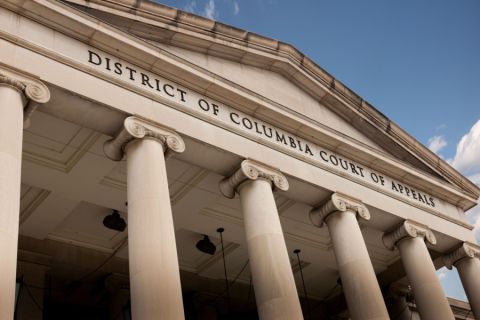
Ductwork takes flue gas from the coal plant to the carbon caption facility where the CO2 is removed from the flue gas. (Source: Business Wire)
NRG Energy, JX Nippon and partners’ $1 billion unit to capture CO2 from a power plant and transport it via pipeline for EOR at the West Ranch oil field has been completed, the companies said Jan. 10.
So far, more than 100,000 tons of CO2 has been captured from NRG’s WA Parish plant in Fort Bend County, Texas, and delivered via a 90-mile pipeline to the Hilcorp Energy Co.-operated West Ranch oil field as part of Petra Nova, as the project—deemed the largest post-combustion carbon capture system (CCS)—is called.
The CO2 is expected to grow oil production at the field, in which NRG and JX Nippon also hold interests, from 300 barrels per day (bbl/d) to up to 15,000 bbl/d over the next few years, an increase of 5x.
“To date we have drilled nearly 100 new wells in the West Ranch Field and have implemented a robust CO2 and groundwater monitoring program,” Hilcorp CEO Jeffery D. Hildebrand said in a statement. “We are excited about this project and expect to see a meaningful increase in oil production at West Ranch in the near future.”
The system captured more than 90% of the CO2 from a stream of flue gas from the power plant during performance testing in December 2016, NRG said in a news release. When operated at this level, the CCS is capable of capturing more than 5,000 tons of CO2 daily.
Key to the accomplishment is technology co-created by Mitsubishi Heavy Industries and Kansai Electric Power Co.
As explained during the September 2014 groundbreaking event for Petra Nova, flue gas from the power plant is run through a vessel where a solvent captures the CO2. The chemical has a socket that fits CO2, enabling the two to bind, be pumped into a vessel and heated to release the CO2, which is then segregated into a pure CO2 stream.
From here, the CO2 flows through the pipeline to the oil field. Once injected, the CO2 dissolves into the oil, lowering the oil’s viscosity enough so that as water sweeps though the formation, oil is pushed up and produced. From this point, the water, oil and CO2 are separated in a processing facility. The CO2 is then compressed and reinjected into the reservoir, and the process starts again. The process is called KM-CDR.
The financial success of the $1 billion project, which received up to $190 million in federal grants from the U.S. Department of Energy, rests in part on oil prices, which have fallen far from roughly $93.32, which a barrel of West Texas Intermediate crude was fetching Sept. 5, 2014.
But the environmental benefits are expected to help push NRG closer to its goal of reducing its carbon emissions by 50% by 2030.
NRG CEO Mauricio Gutierrez called Petra Nova “another major step in NRG’s effort to reduce our carbon emissions and create a more sustainable energy future, and we are proud that this accomplishment was achieved on-budget and on-schedule in a competitive energy environment.”
Shunsaku Miyake, president and CEO of JX Nippon Oil & Gas Exploration Corp., added “the project will contribute to significantly increasing incremental crude oil production from legacy oil fields and also will be a major step forward in helping to decrease CO2 emissions globally.”
Velda Addison can be reached at vaddison@hartenergy.com.
Recommended Reading
Construction on Kinder Morgan’s Tennessee Pipeline Delayed by Stay
2024-10-15 - An appeals court panel put two permits on hold for Kinder Morgan’s pipeline to consider the project’s implications on the Clean Water Act.
LNG Sector Under Fire as Activists’ Lawsuits Surge
2024-10-10 - ESG litigation is increasingly affecting the LNG industry while, more broadly, nearly 70% of climate-related cases are filed in the U.S.
Venture Global Taking Adequate Steps in Calcasieu Pass Construction, FERC Says
2024-10-01 - The Calcasieu Pass LNG plant’s foundational customers have turned to legal auction due to the plant’s long commissioning time.
Supreme Court Takes Up Clean Air Act Venue Fight
2024-10-21 - The high court’s justices will hear arguments if the EPA’s air pollution rules should be challenged in D.C. or in regional courts.
Q&A: Making Midstream’s Case in DC
2024-11-08 - GPA Midstream Association President and CEO Sarah Miller spoke with Oil and Gas Investor on working with the industry’s needs and defending the sector in Washington, D.C.
Comments
Add new comment
This conversation is moderated according to Hart Energy community rules. Please read the rules before joining the discussion. If you’re experiencing any technical problems, please contact our customer care team.






